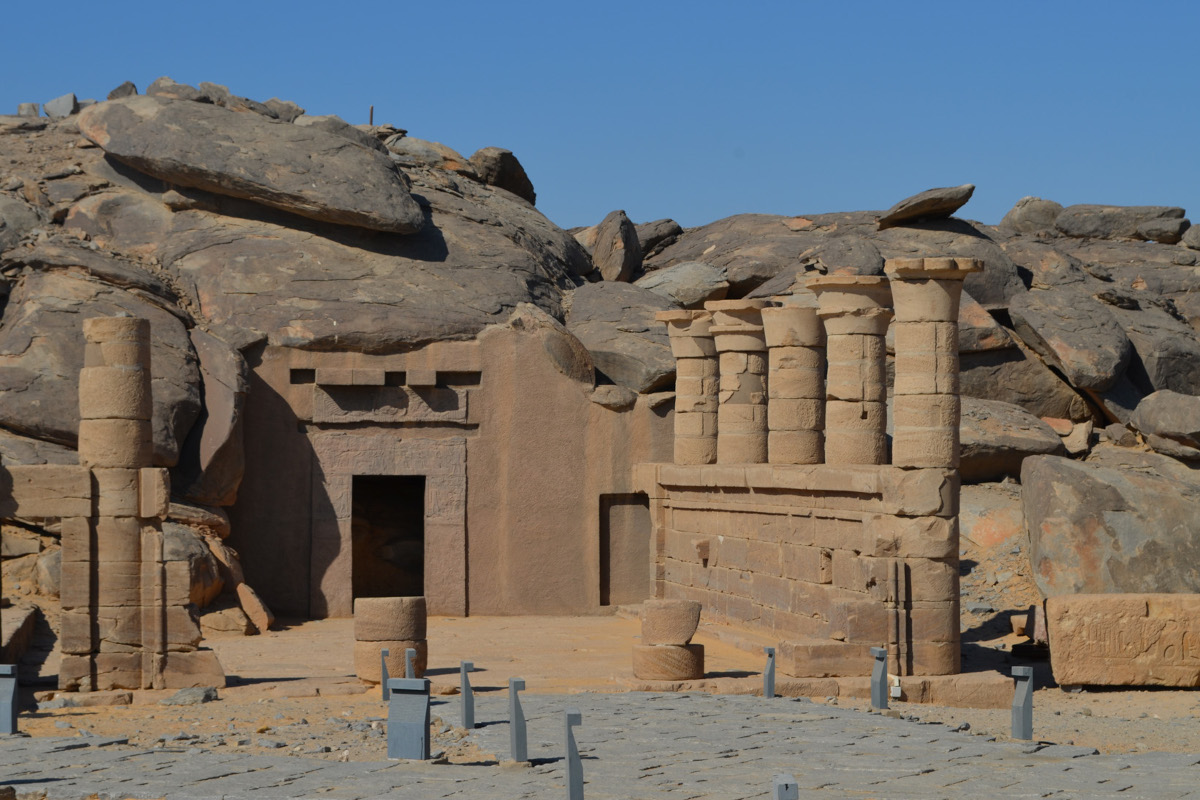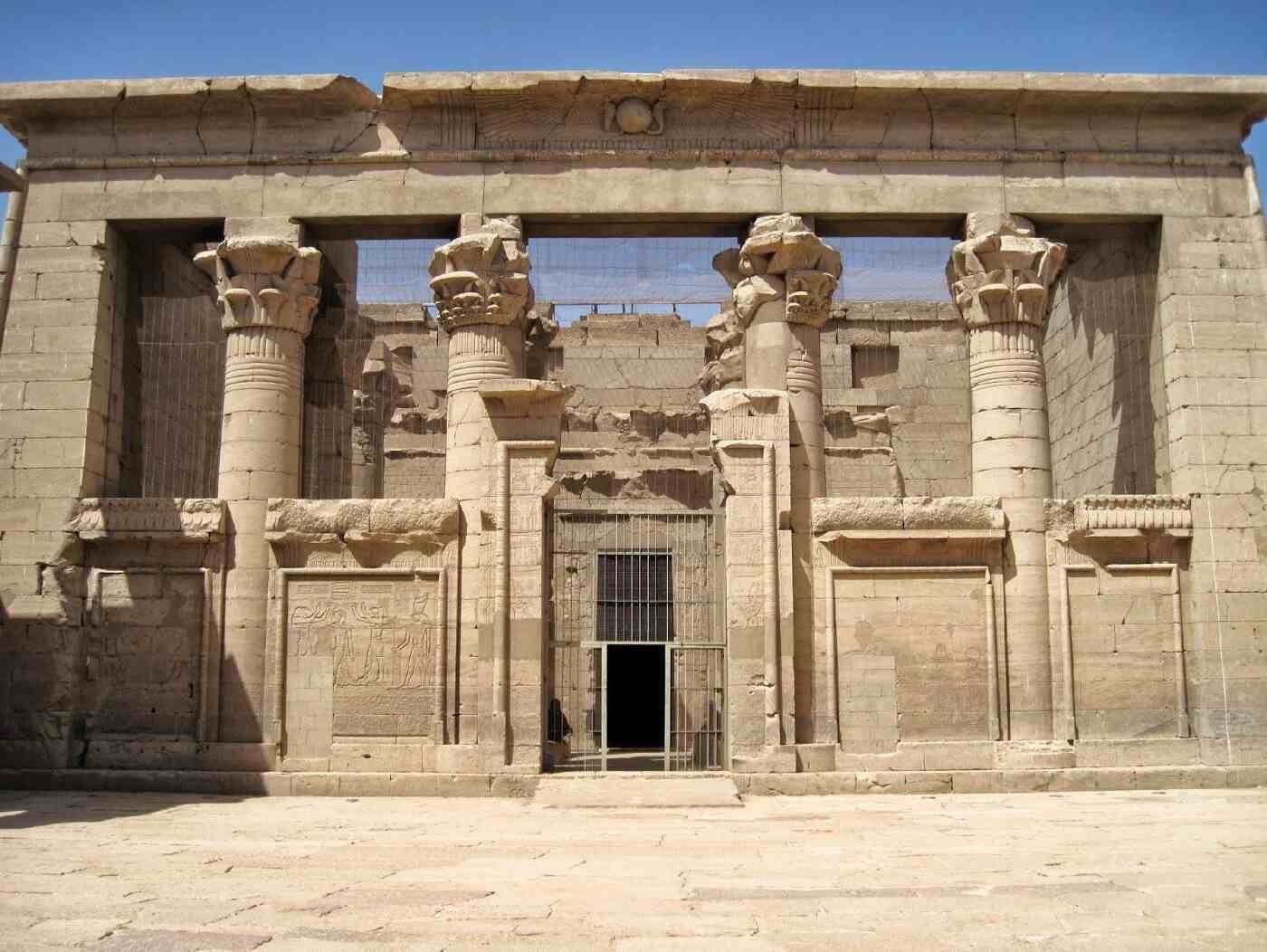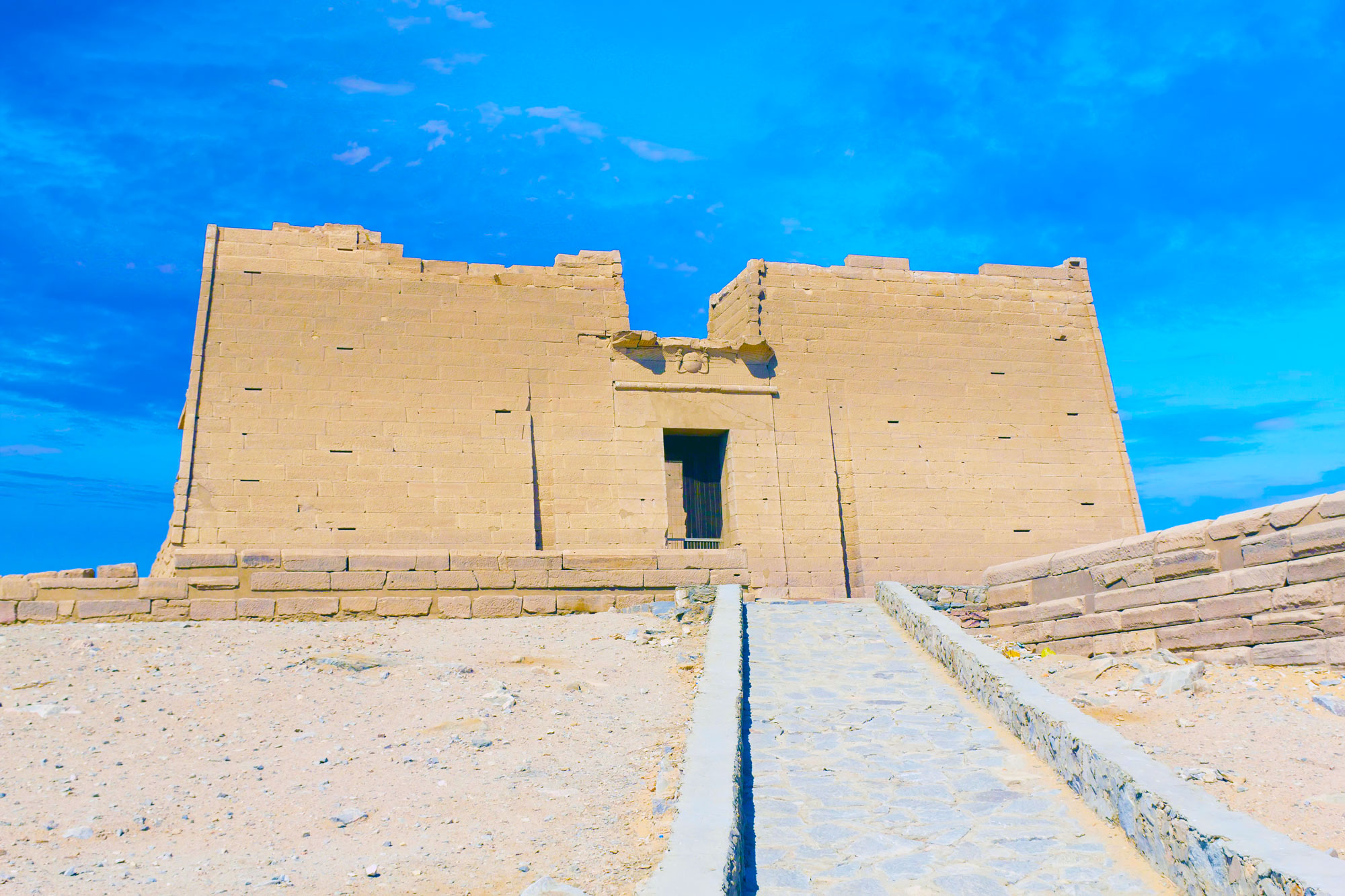Kalabsha Temple: A Comprehensive Travel Guide

Introduction to Kalabsha Temple
Kalabsha Temple is an ancient Egyptian temple located on the western bank of the Nile River near Aswan. With its rich history and remarkable significance, it is a must-visit destination for history enthusiasts and travellers alike. In this comprehensive travel guide, we will explore the temple's history and significance and provide information on how to reach this captivating site.
Overview of Kalabsha Temple's History and Significance
Built during the reign of Emperor Augustus in the early Roman period, Kalabsha Temple is dedicated to the Nubian god Mandulis. It was originally situated on the island of Bab al-Kalabsha in Lake Nubia. Still, it was later relocated to its current location to prevent it from being submerged by the rising waters caused by the construction of the Aswan High Dam.
The temple is a magnificent example of ancient Egyptian and Roman architecture and artistry. Its impressive sandstone structure features intricate carvings, stunning reliefs, and well-preserved hieroglyphics that narrate the stories of ancient deities and kings. The temple also houses a collection of statues, including a 6-meter-tall statue of the Nubian king and god Amun.
Visiting Kalabsha Temple offers visitors a unique opportunity to delve into the ancient history and culture of Egypt. It provides valuable insights into the religious beliefs and practices of the Nubian civilization and their interaction with the Roman Empire. The temple's preservation and archaeological significance make it an important site for scholars and tourists seeking to explore Egypt's rich past.
Location and How to Get There
Kalabsha Temple is situated approximately 40 kilometres south of Aswan, making it easily accessible for tourists. There are several transportation options available:
-
By Taxi or Private Car: Hiring a taxi or a private car is the most convenient way to reach Kalabsha Temple. You can negotiate the fare with the driver or arrange for a guided tour.
-
By Felucca: For a more adventurous experience, you can take a felucca, a traditional Egyptian sailboat, from Aswan to the temple. This leisurely journey allows you to enjoy the scenic views of the Nile River while immersing yourself in the tranquillity of the surroundings.
-
By Nile Cruise: Many Nile cruises include a visit to Kalabsha Temple as part of their itinerary. This option provides a seamless and comfortable travel experience, combining sightseeing with the leisure and luxury of a cruise.
Once you arrive at the temple, you must purchase an entrance ticket. It is recommended to hire a knowledgeable local guide who can provide in-depth information about the temple's history and guide you through its various sections.
Kalabsha Temple is a magnificent historical site that offers a fascinating glimpse into Egypt's ancient past. With its rich history, architectural splendour, and cultural significance, it is a destination that should not be missed. Plan your visit to Kalabsha Temple and embark on an unforgettable journey through time and culture.

Exploring Kalabsha Temple
Kalabsha Temple, situated on the western bank of the Nile River near Aswan, is a captivating destination for history enthusiasts and travellers. Immerse yourself in the rich history and remarkable significance of this ancient Egyptian temple with our comprehensive travel guide. In this guide, we will explore the architecture and design of the temple, as well as its notable features and structures within the temple complex.
Architecture and design of Kalabsha Temple
Kalabsha Temple is a magnificent example of ancient Egyptian and Roman architecture. Built during the reign of Emperor Augustus in the early Roman period, the temple showcases the fusion of these two distinct architectural styles.
The structure of Kalabsha Temple is primarily made of sandstone, which gives it a warm and inviting appearance. The temple's design features a large pylon, or gateway, with two towers adorned with intricate carvings and stunning reliefs. As you venture inside, you will be greeted by a spacious courtyard surrounded by colonnades with beautifully carved columns.
The temple walls are adorned with well-preserved hieroglyphics, offering a glimpse into the stories of ancient deities and kings. The attention to detail in the carvings and reliefs is remarkable, depicting scenes from Egyptian mythology and historical events.
Notable features and structures within the temple complex
Within the Kalabsha Temple complex, you will find several notable structures and features that add to its allure.
One of the highlights is the sanctuary, located at the temple's rear. This sacred area is dedicated to the Nubian god Mandulis and features a small shrine where offerings and rituals occur. The sanctuary is beautifully decorated with detailed reliefs and statues.
Another notable feature is the 6-meter-tall statue of the Nubian king and god Amun, which stands proudly inside the temple. This majestic statue, carved from sandstone, showcases the artistic skill and craftsmanship of the ancient Egyptians.
As you explore the temple complex, you will also come across smaller chapels and rooms for various religious ceremonies and offerings. Each section of the temple offers a unique insight into the religious beliefs and practices of the Nubian civilization during the Roman period.
To enhance your visit to Kalabsha Temple, consider hiring a knowledgeable local guide who can provide in-depth information about the temple's history and guide you through its various sections. Their expertise will enrich your experience and help you appreciate the significance of this ancient temple.
Kalabsha Temple is an architectural marvel that offers a captivating window into Egypt's ancient past. From its impressive design to its well-preserved hieroglyphics, every corner of the temple complex tells a story. Explore this historical gem and discover the wonders of Kalabsha Temple on your next visit to Aswan.
History and Legends of Kalabsha Temple
Explore the fascinating history and mythical legends associated with Kalabsha Temple, a remarkable ancient Egyptian temple near Aswan. Immerse yourself in the rich culture and stories that have shaped this iconic landmark.
Ancient Egyptian history and mythology associated with the temple
Kalabsha Temple, also known as the Temple of Mandulis, was built during the early Roman period under the reign of Emperor Augustus. However, its origins can be traced back to ancient Egyptian times. The temple is dedicated to the Nubian sun god Mandulis, greatly revered by Egyptian and Nubian civilizations.
According to ancient mythology, Mandulis represented the sun's power and was believed to bring prosperity and protection. The temple served as a sacred place where worshipers would come to offer their prayers and seek blessings from the deity.
The hieroglyphics and reliefs adorning the temple's walls depict scenes from Egyptian mythology and historical events. They tell stories of deities such as Ra, Isis, Osiris, and Horus, as well as the legendary battles fought by pharaohs. These carvings give us a glimpse into the rich mythology and beliefs of the ancient Egyptians.
Significant events and stories related to Kalabsha Temple
One of the most significant events associated with Kalabsha Temple is its relocation. Due to the construction of the Aswan High Dam in the 1960s, many historical sites were at risk of being submerged. To save Kalabsha Temple from the rising waters, it was meticulously dismantled and relocated to its current location on the shore of Lake Nasser.
Another interesting legend linked to the temple involves the god Amun. It is believed that Amun visited Kalabsha Temple in the form of a crocodile. In ancient Egyptian culture, crocodiles were considered sacred animals, representing power and protection. This legend further adds to the mystical aura surrounding the temple.
Today, Kalabsha Temple stands as a testament to the enduring legacy of both the ancient Egyptians and Nubians. Its impressive architecture and intricate carvings continue to awe visitors, offering a window into the past and a deeper understanding of the region's rich history.
To fully immerse yourself in the stories and legends of Kalabsha Temple, consider hiring a knowledgeable local guide. They can provide fascinating insights, explain the symbolism behind the carvings, and share lesser-known tales associated with the temple.
Kalabsha Temple is not only a site of architectural marvel but also a place steeped in history and mythology. Its connection to ancient Egyptian culture and the stories it holds make it a compelling destination for history enthusiasts and travellers alike. Visit Kalabsha Temple during your next trip to Aswan to experience the magic and intrigue surrounding this ancient landmark.

Visitor Information and Tips
Entrance fees and visiting hours
When planning a visit to Kalabsha Temple, it is important to know the entrance fees and visiting hours. As of [current year], the entrance fee for adults is [fee], while children and students may have discounted rates. The temple is open to visitors from [opening time] to [closing time]. It is recommended to check the official website or contact the local tourism office for the most up-to-date information regarding fees and operating hours.
Guided tours and audio guides
To make the most of your visit to Kalabsha Temple, consider taking a guided tour or using audio guides. These options provide valuable insights into the history, mythology, and architectural features of the temple. Knowledgeable guides can highlight the intricate carvings, explain their symbolism, and narrate the fascinating stories associated with this ancient site. Audio guides, available in multiple languages, offer a self-paced and informative exploration. Whether you choose a guided tour or an audio guide, these resources enhance the overall experience and help you appreciate the rich cultural heritage of Kalabsha Temple.
Important things to know before visiting Kalabsha Temple
Before embarking on your journey to Kalabsha Temple, here are a few important things to keep in mind:
-
Dress modestly: As a place of cultural and religious significance, it is respectful to dress modestly. Consider wearing clothing that covers your shoulders and knees.
-
Bring sunscreen and water: The temple complex can get hot, especially during peak hours. Protect yourself from the sun by applying sunscreen and staying hydrated by carrying a water bottle.
-
Respect the site: Kalabsha Temple is a precious archaeological site, and it is important to respect its historical value. Follow any rules and regulations provided by the authorities, avoid touching the carvings or walls, and refrain from leaving any litter behind.
-
Capture memories responsibly: While photography is usually allowed, be mindful of the restrictions in certain areas. Flash photography may damage ancient artefacts, so be sure to follow any guidelines provided by the temple staff.
-
Take your time: Kalabsha Temple is a place to immerse yourself in history and appreciate its significance. Allow ample time to explore the temple complex, admire the detailed carvings, and enjoy the peaceful ambience.
By keeping these tips in mind, you can ensure a memorable and respectful visit to Kalabsha Temple. Remember to check for any updated information or additional guidelines before your visit, as these may vary based on current circumstances or renovations.
Exploring Kalabsha Temple is a journey through time, delving into the captivating stories and legends of ancient Egypt. From its rich mythology to the impressive architecture, this remarkable temple offers a unique glimpse into the past. Immerse yourself in the cultural heritage, learn from knowledgeable guides or audio resources, and embrace the awe-inspiring atmosphere of Kalabsha.

Nearby Attractions and Activities
If you're planning a visit to Kalabsha Temple, you'll be pleased to know there are many other historical sites and recreational activities to explore in the surrounding area. Here are some recommendations to make the most of your trip:
Other historical sites near Kalabsha Temple
-
Philae Temple: Located on a picturesque island, Philae Temple is renowned for its beautifully preserved temple complex dedicated to the goddess Isis. Marvel at the stunning architecture and intricate hieroglyphics as you learn about the religious significance of this ancient site.
-
Abu Simbel Temples: Take a short trip from Kalabsha to witness the awe-inspiring Abu Simbel Temples. These colossal structures were built during the reign of Pharaoh Ramses II and are known for their incredible scale and rock-cut façades.
-
Aswan High Dam: A marvel of modern engineering, the Aswan High Dam provides power to the region and regulates the flow of the Nile River. Visit the dam to learn about its construction and impact on the local environment and economy.
Recreational activities and experiences in the surrounding area
-
Nile River Cruise: Embark on a leisurely cruise along the Nile River and immerse yourself in the breathtaking scenery. Enjoy the comforts of a cruise ship while taking in the sights of ancient temples, lush landscapes, and local communities along the riverbanks.
-
Nubian Village Tour: Experience the vibrant Nubian culture by visiting a traditional Nubian village. Learn about their rich history, unique customs, and colourful arts and crafts. Don't forget to indulge in delicious Nubian cuisine during your visit.
-
Desert Safari: Head out on an adventurous desert safari and explore the vast and otherworldly landscapes surrounding Aswan. Ride a camel or a 4x4 vehicle as you navigate through dunes, visit ancient rock formations, and witness stunning sunsets over the desert.
-
Felucca Ride: Hop on a traditional Egyptian sailboat called a felucca and sail along the Nile River. Enjoy the gentle breeze and picturesque views as you glide past the lush riverbanks and catch glimpses of historical landmarks.
-
Local Markets: Take a stroll through the bustling markets of Aswan and immerse yourself in the vibrant atmosphere. Shop for traditional handicrafts, spices, and souvenirs while interacting with friendly local vendors.
Plan your itinerary accordingly and allocate enough time to enjoy each attraction and activity fully. These nearby attractions and experiences offer a diverse range of cultural, historical, and outdoor adventures that will enhance your visit to Kalabsha Temple and make it an unforgettable journey through ancient Egyptian history.
